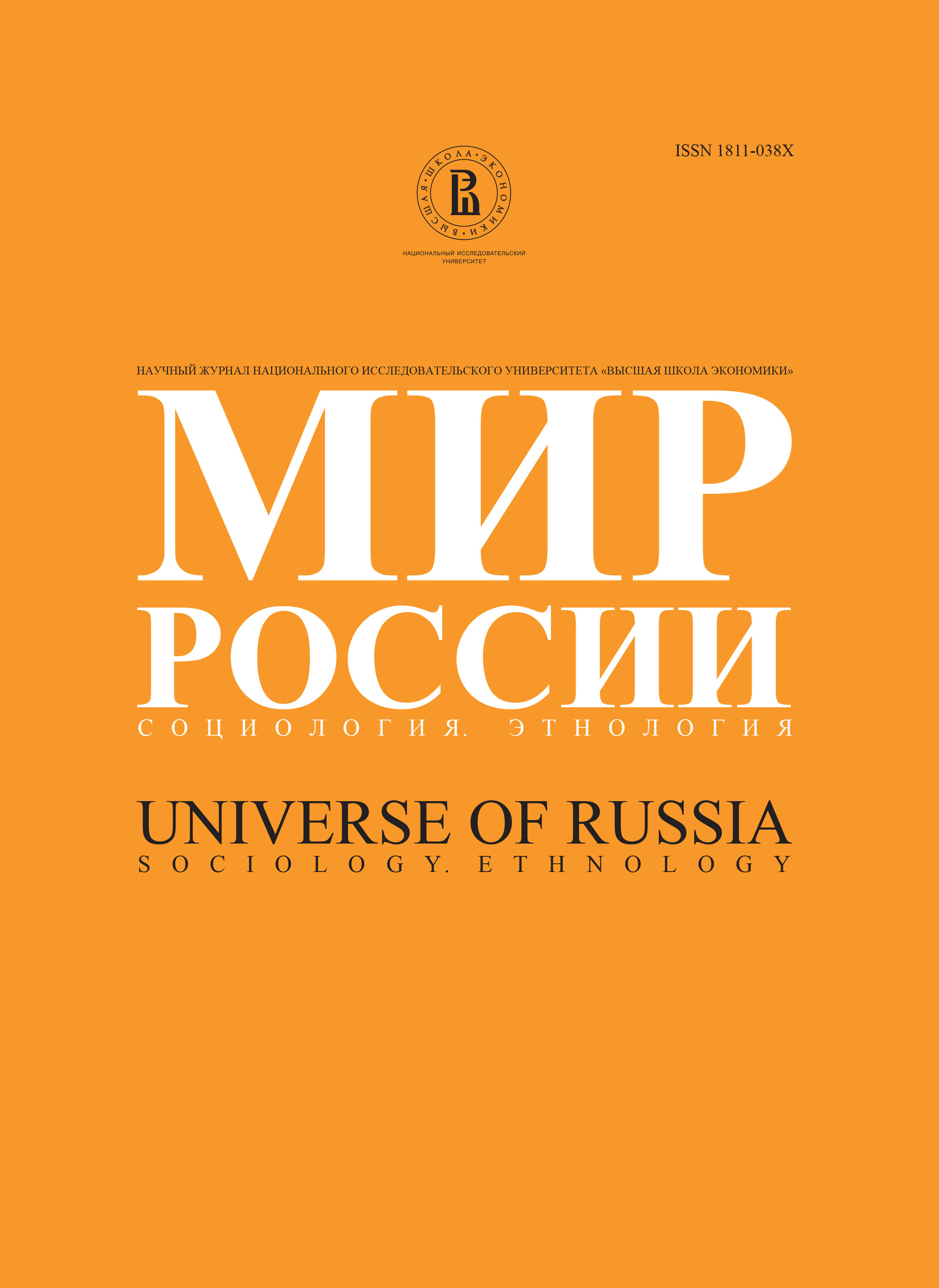Новейшие тенденции формирования семьи в России
Abstract
Since the beginning of the 1990s demographic portrait of marriage rates in Russia has been changing swiftly. The average age of fiancés has jumped from 23,9 in 1992 to 26,1 in 2005, while for fiancées from 21,7 to 23,3 respectively. The general intensity of marriages in the age up to 25 has decreased almost twofold both for men and women. According to data of population census 1989 among 1000 men in the age 20–24 only 595 have never been married (compared to 335 among women). According to the last census in 2002 the figures were 736 and 526 respectively. No doubt that during the following 5 years after the last census a proportion of the young, who have never been married up to 25 years old, has been increasing rapidly. Serious changes in the marriage patterns in Russia come in line with more significant changes in fertility models.How significant should this increase in the marriage age be considered? Is marriage just being postponed and continues to be a common social pattern or is it losing its ground as social institute? Can we agree with the widespread conviction that marriages are subject to economic difficulties and social tension, which are common for contemporary Russia? Or is it something else? Is the new Russian marriage model reversible? How would the transformation of marriage and partnership relations affect fertility rates?
These and many other questions can be answered with the help of a reliable and profound empirical base. Unfortunately current demographic statistics and population censuses lack information. The existing statistical categories are too restricted and conventional to provide better description of complex processes within families. The imperfection of social attributes provided through official statistics is being criticized constantly, but today it has become evidently helpless. For example, today every third child in Russia is born out of a wedlock. Does that mean that every third child grows up without a father? A significant problem like this cannot be resolved through official statistics. Another example, the intensity of marriages up to 25 years old has dramatically decreased during the last 20 years. Does that mean that the popularity of voluntary desolation grows in Russia? Again it cannot be resolved through official statistics.
It is fair to say that not Russian researches alone face such problems. In most of the developed countries statistical observations at macro-level (general population censuses, annual observation of demographic events) are usually in the arrears of social and demographic reality. It is more often doubted that traditional population statistics can actually be reformed to provide better and more precise information.
In 2004 Russia for the first time ever has conducted a representative socio-demographic survey according to the program which was approved not by Russian officials, but international expert community. Unprecedented in its scale the program of the survey «Parents, children, men and women in family and society» fully corresponds to the international program «Generations and Gender Programme (GGP), which was developed in 2000-2004 in mutual cooperation of European and American research centers under the coordination of European Economic Commission of UN. By now similar surveys have been already conducted in more than ten European countries, Japan and Australia.
In the spring of 2007 in full correspondence with the international standards another wave of the survey has been completed (which is repeated once every three years). The data of this survey is now worldwide available for researchers across the world to work with 10261 demographic observations (respondents) featuring over 2000 variables. Let’s hope the third wave of this survey also becomes available in 2010.
Personal research interest of the author has recently been focused on the problem of transformation of marriage and family model in Russia and other countries, which is crucial for understanding the changes in fertility rates.






